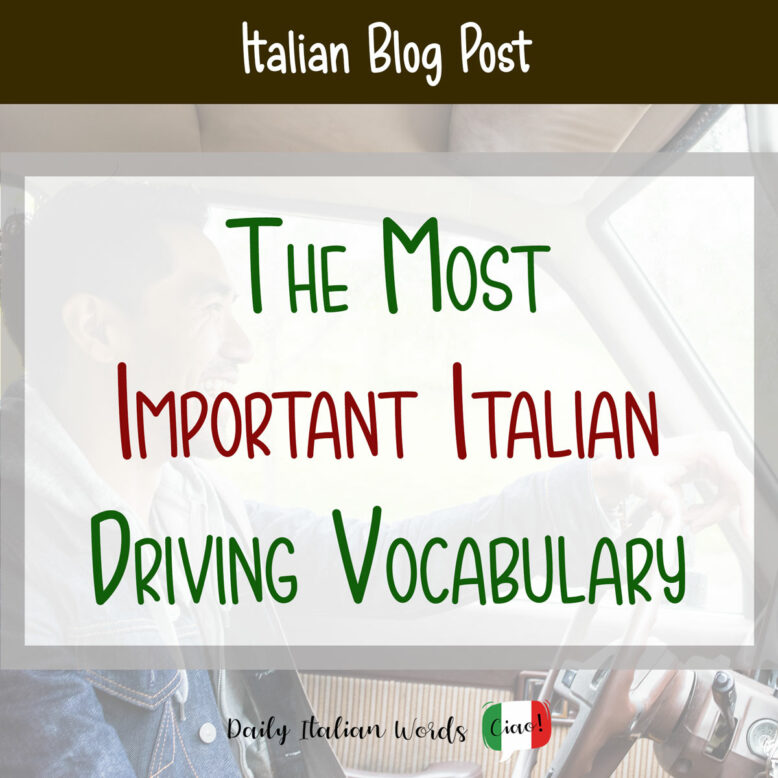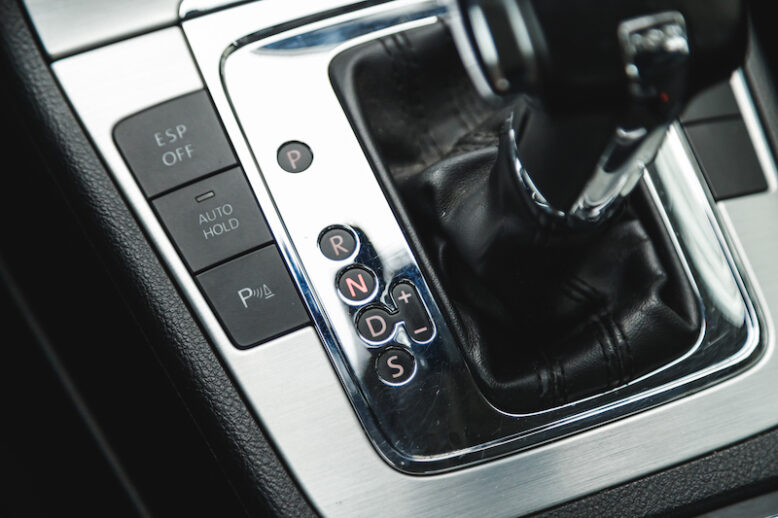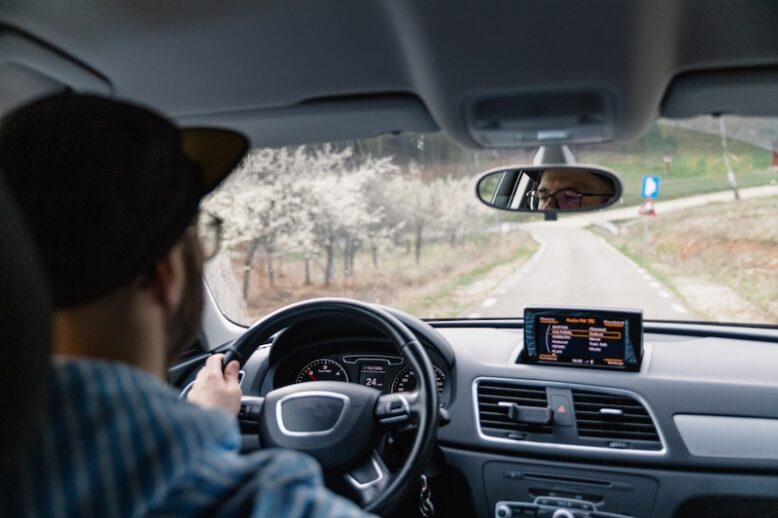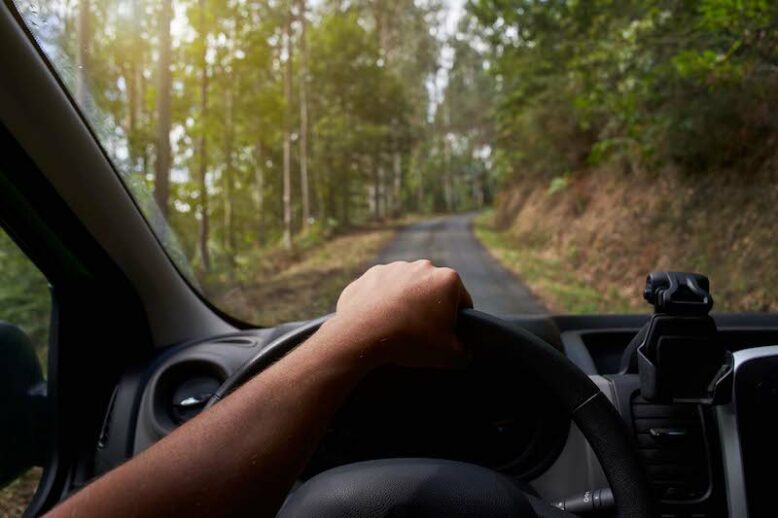So, you’ve decided to explore the beautiful landscapes of Italy with an epic on the road trip? Fantastico! You’re in for an unforgettable adventure packed with breathtaking views and delightful surprises at every turn. But before you hit the road, here’s a brief guide with some essential Italian driving vocabulary to help you navigate like a true local.

How to drive in Italy
First things first, you need to be at least 18 years old with a valid patente di guida (driving license) to get behind the wheel in Italy. Got your license at 16? You’ll have to wait a couple more years, sorry. For those with a non-EU license, don’t forget your international driving permit – otherwise, you’ll be stuck in the passenger seat!
In Italy, you’ll be driving a destra (on the right side of the road). Always stick to the rightmost lane on the carriageway and if you need to sorpassare (overtake), you can do it on the the left side of the road. At rotonde (roundabouts), give way to cars coming from the left, while at incroci (intersections), the rule is: vehicles with no one on their right go first.
Fun fact: Italy established right-hand driving by law in 1923! Before that, each province decided its own driving direction, causing quite the chaos. The switch was influenced by early 20th-century car designs where il freno a mano (the handbrake) was in the center of the vehicle and the driver’s seat was on the right, making it easier to operate the handbrake with the right hand – traditionally the stronger hand.
Safety is key, so Italian law requires you to wear le cinture di sicurezza (seat belts) at all times. You must also carry un triangolo di emergenza (an emergency triangle) and un giubbotto catarifrangente (a reflective vest) for roadside emergencies.
From November 15 to April 15, your car needs to be equipped with gomme da neve (winter tires) or have catene da neve (snow chains) on board. When the snow season ends, switch to gomme estive (summer tires) from April 15 to October 15.
Now you’re ready to enjoy the Italian roads, let’s delve into some essential vocabulary that will make you sound like a true Italian driver!
Italian car vocabulary
In Italian, the word for “car” is automobile. However, you’ll more often hear auto or macchina. So, say you want to say “I bought a new car,” you can use any of these phrases:
- Ho comprato un’auto nuova
- Ho comprato una macchina nuova
- Ho comprato un’automobile nuova
While all three are correct, auto and macchina are the most commonly used in spoken Italian.
When it’s time to leave, as the guidatore (driver), you’ll open la portiera (the car door) and settle into the sedile anteriore (front seat). Before hitting the road, check the specchietto retrovisore (rearview mirror) and the spie (control lights) on the cruscotto (dashboard) to ensure everything is working fine, especially il motore (the engine) and la batteria (the battery). The other passeggeri (passengers) take their seats too.
Next, start the car, turn on the anabbaglianti (low beams), grab the volante (steering wheel), press the frizione (clutch), and put in la prima (first gear). Check those specchietti retrovisori laterali (side-view mirrors) one last time, and you’re off!
As you pick up speed, you’ll press the acceleratore (accelerator) and use the cambio (gearbox) to change the la marcia (the gears): seconda (second gear), terza (third gear), quarta (fourth gear), quinta (fifth gear), and even sesta (sixth gear) in some cars. Unless, of course, you’ve opted for a car with cambio automatico (automatic transmission), which means less work for you!
On a warm day, roll down the finestrino (car window) for some fresh air or turn on the aria condizionata (air conditioning). If it’s raining, activate the tergicristalli (windshield wipers) to keep your parabrezza (windshield) clear. And for those foggy days, don’t forget the fendinebbia (fog lights).
Approaching a semaforo rosso (red traffic light)? Press il freno (the brake) to stop. Then, if the car ahead of you is daydreaming when the light turns green, a gentle tap on the clacson (horn) should do the trick.
When driving at night on dark roads, switch on the abbaglianti (high beams), but remember to switch back to the anabbaglianti (low beams) when other cars approach – no one likes being blinded!
If you feel lots of vibrations on the volante (steering wheel) while driving, chances are hai bucato (you have a flat tire)! Brake gently, pull over and turn on le quattro frecce (the hazard lights). If you’ve got una gomma di scorta (a spare tire), you can replace the gomma bucata (flat tire) and be back on your way to the nearest meccanico (mechanic) in no time.

Types of roads in Italy
When driving in Italy, it’s important to be familiar with the different types of strade (roads) you will encounter. Here’s a quick guide to the main types:
Le autostrade are high-speed roads designed for long-distance travel. They have two separate carreggiate (carriageways) with two or three corsie (lanes) for each senso di marcia (direction of traffic). Watch for the green signs with white text—these indicate you’re entering an autostrada. Just remember, these roads come with a pedaggio (toll): you grab a ticket at the entrance and pay when you exit. If you run into trouble, corsie di emergenza (emergency lanes) are available, some with phones directly connected to the soccorso stradale (breakdown service). For more details, you can visit the Italian motorway network website at autostrade.it.
Le Strade Statali (State Roads) are important roads that connect major centres across different regions. Known by the prefix SS, these roads are toll-free and typically feature two carreggiate (carriageways).
Fun fact: Italy’s first Strada Statale was Via Aurelia, an ancient road that dates back to the Roman Empire! It was originally built during the Roman Empire to link Rome with Cerveteri and eventually extended to France.
Italian State Roads are then divided into Strade Regionali (Regional Roads), marked by the prefix SR and connecting provincial capitals within the same region, and Strade Provinciali (Provincial Roads), marked with the prefix SP and connecting municipalities within the same province.
Then there are Strade Comunali (Municipal Roads) and Strade Urbane (Urban Roads) facilitating travel within municipalities. Both are marked with white and black signs.
Lastly, le Strade Bianche (White Roads) are the unpaved roads that lead you into the heart of rural Italy. They’re perfect for scenic drives and discovering hidden gems off the beaten path.
Speed limits in Italy
By law, the limite di velocità (speed limit) is fixed at 130 km/h on motorways, 90-110 km/h on state roads, and 50 km/h or below in urban centres.
When driving in Italy, beware the dreaded Autovelox! Those infamous machines are always ready to snap a pic of you speeding. Keep an eye out for signs saying controllo elettronico della velocità (electronic speed control) to avoid any surprise fine.

Limited traffic zones
Italian towns and cities are full of ZTL—zone traffico limitato (limited traffic zones). These areas are off-limits to cars, unless you have a special permit.
Always stay alert for ZTL signs – your GPS might be great for directions, but not so much for spotting ZTLs. Also, just because someone else is driving in doesn’t mean you can. They might be residents with permits. Instead, you’ll get fined.
At the gas station
While driving, making a stop at the distributore di benzina (gas station) is inevitable. Italians also refer to it as the benzinaio, a term that doubles as both the station itself and the attendant who might help you out.
If there’s no gas station in sight and your GPS has decided to take a break, just pull over and ask a local, Scusi, dove posso trovare un benzinaio? (Excuse me, where can I find a gas station?). They’ll point you in the right direction in no time.
Once you get there, you face a choice: fai da te (self service) or servito (served), which usually costs a bit more.
If you choose to fill up the car yourself, depending on the gas station, you’ll either need to use a distributore automatico (self-service machine) or pump the gas and then pay an attendant at the booth.
If, instead, you prefer to have the benzinaio (gas station attendant) pump the gas for you, pull over to the servito (serviced) pump and tell them what you need. For example:
- Il pieno per favore (Full tank, please)
- Venti, grazie (Twenty euros’ worth, please) or whatever amount you’d like to spend
Before the benzinaio starts pumping, make sure to tell them what your car needs. Is it benzina (gas) or gasolio (diesel)? Mixing those up could turn your Italian road trip into a not-so-fun adventure!
Parking in Italy
Parking in Italy is all about colours:
Strisce blu (blue lines) = paid parking
You’ll need to use the parchimetro (parking meter) located in the parking area to pay for your spot.
Strisce gialle (yellow lines) = parking reserved for disabled individuals
These spaces are designated to ensure that those who need closer access can park conveniently. Make sure not to park here unless you have the appropriate permit.
Strisce bianche (white lines)= free parking
These spots are available for anyone to use without charge. Some may require you to display a disco orario (parking disc) to indicate your arrival time. This is usually to enforce time limits and ensure fair use. Check for any signs that might require this!

Renting a car in Italy: Useful phrases
Make sure you have your patente (driving license), un documento di identità (identity document) and the credit card of the conducente (driver). These are the essentials every rental company will ask for.
Most companies require drivers to be at least 25 years old, with one or two years of driving experience, and under 75. Some might rent to those as young as 21, but be ready to pay a supplement if you fall into this younger bracket.
Here are some phrases that could come in handy when you’re at a car rental booth in Italy:
Vorrei noleggiare una macchina.
I would like to rent a car.
Avete una macchina con il cambio automatico?
Do you have an automatic car?
Avete una macchina con il cambio manuale?
Do you have a manual shift car?
Quanto costa al giorno?
How much is it per day?
Che assicurazione è inclusa nel prezzo?
What type of insurance is included in the rental price?
Consider getting additional coverage so you don’t have to worry about anything during the trip.
Quanto devo pagare di cauzione?
How much do I need to pay as deposit?
Posso vedere il contratto di noleggio?
Can you show me the rental agreement?
Entro quando devo riconsegnare la macchina?
When should I return the car?
To avoid having to pay extra charges, be clear about the return time.
Che tipo di benzina serve?
What kind of fuel does it need?
Always ask whether the car needs benzina (gasoline) or gasolio (diesel). Using the wrong type can result in expensive repairs.
With this Italian driving vocabulary in your pocket, you’re ready to hit the road like a pro. Buon viaggio!

Valentina Nicastro is a travel writer in love with her home country, Italy. Having travelled widely around the globe, she realised there was more to explore closer to home and decided to put the passport aside for a while. When she is not immersed in documenting Italy, you’ll find her donning her communication consultant hat, weaving words as a content writer and bridging linguistic divides as a translator.


